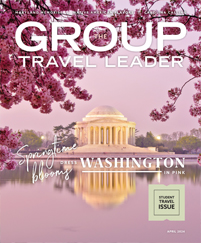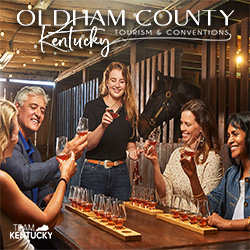New Mexico’s visitor experiences are as memorable and varied as its landscape.
To the north, Taos is a world unto itself, where the Old West meets cutting-edge biotecture and outdoor adventure. Albuquerque celebrates flamenco culture and stunning views from Sandia Peak.
Nestled in the southern Mesilla Valley and boasting more than 320 days of sunshine per year, Las Cruces lures visitors with a wide range of experiences, including nearby White Sands National Monument. And near Truth or Consequences, Spaceport America invites visitors into a hands-on experience inside its commercial space launch facility.
Taos: History and Scenery
In the high desert of northern New Mexico, Taos is a picturesque mountain town with a rich Native American heritage.
On the edge of town, the Taos Pueblo is the oldest continuously inhabited community in the United States. The river flowing through the property is still used for drinking and cooking. Today, five to eight families live in the pueblo full time, but 3,000 to 4,000 tribal members inhabit the region. The original church bell tower is surrounded by the graveyard that contains those buried after the 1847 bombing by the U.S. Calvary. The reconstructed St. Jerome’s Chapel dates to 1850 and remains in use today.
In town, the Couse-Sharp Historic Site commemorates two artists who shared a common vision to bring the European art scene to Taos. All looks as it did 100 years ago. Besides lovely gardens, visitors can tour the home of E.I. Couse. One- or two-hour docent-led tours highlight the studios, paintings and original furnishings of Couse and J.H. Sharp, who started the Taos Society of Artists. Visitors can stand at Couse’s easel and see his model stage and props, as well as step inside Sharp’s recently restored 1915 studio.
Near Taos, the Rio Grande takes rafters on both tame and thrilling journeys. Between Questa and Pilar, this stretch of river is divided into different sections by difficulty. Los Rios River Runners has been operated by owner Cisco Guevara for 48 years. Its full-day Taos Box trip flows through 17 miles of intense rapids. The Lower Gorge offers a half-day, mellow float on Class II rapids and a full day that includes the Racecourse, with Class III rapids.
The company’s unique trips combine paddle and pedal, or paddle and saddle; and its tranquil sunset dinner float in summer serves dinner on the riverbanks.
“My favorite is the sunset raft trip because it’s relaxing and wildlife comes out in the evenings,” said Guevara. “People have the opportunity to spot river otter, beaver, eagles and, sometimes, a bobcat.”
Before reaching Taos proper and just north of the Rio Grande Gorge Bridge, the futuristic Earthship community makes an interesting stop. Here, off-the-grid houses are built from used automobile tires packed with dirt. Residents grow food with indoor gardens and water used multiple times. The visitor center demonstrates a fully functioning Earthship home and explains the design principles involved.
Albuquerque: Flamenco and Mountain Vistas
Sophisticated and earthy, cultured and outdoorsy, Albuquerque displays many facets. Woven into the city’s cultural fabric is the tradition of flamenco. The Hotel Albuquerque hosts year-round flamenco performances that feature premier artists from Spain and the United States. Spanish tapas are served by award-winning chefs, accompanied by regionally inspired wines and spirits.
Within the intimate setting of a refurbished house adjacent to historic Old Town, groups can experience an authentic Spanish tradition at Casa Flamenca. Each summer, tableau performances feature a series of guest performers. Audiences sit in a circle around the dancers and play an important role in the performance, yelling words of encouragement such as “Ole!”
“Flamenco is always a conversation among the musicians and dancers, and the tableau isn’t a choreographed performance, which makes it alive,” said Valeria Montes, executive and artistic director. “Groups can also come for a dance class and lunch buffet, or we collaborate with a local winery to serve tastings as part of the experience.”
Anticipating its 33rd year in June, Flamenco Albuquerque reigns as the largest flamenco event held outside of Spain. The crowning performance, Fiesta Flamenca, takes place at the National Hispanic Cultural Center, which hosts more than 700 events annually and is home to the largest concave fresco in North America, by artist Frederico Vigil. The gala event showcases world-class dancers and musicians in a swirl of color and passion.
Groups shouldn’t leave Albuquerque without venturing up Sandia Peak. Sandia Peak is accessible via the Sandia Peak Aerial Tramway, the longest of its kind in North America. This mountaintop experience guarantees panoramic views. Hiking trails fan out from the peak, which delivers downhill skiing in winter, all just 30 minutes from downtown. A new restaurant, Ten 3, opened at the top of Sandia Peak. The restaurant is named for its elevation, 10,300 feet above sea level.
Set to open in February, the Sawmill Market will be housed within the Sawmill District. The former Paxton Lumber warehouse is being converted into a 25,000-square-foot artisanal food hall, a first in New Mexico, and will focus solely on the state’s farmers and producers.
“Our full demonstration kitchen will feature chef events and dinners, as well as four outdoor sheds hosting family-friendly games and stages for movie nights and music,” said Brandon Palmer, Sawmill Market general manager.
The Sawmill District will be anchored by the Hotel Chaco, a locally owned boutique property patterned after the UNESCO Chaco Culture National Historical Park. Some 50 miles northwest of Albuquerque, it was home to the thriving Anasazi community from A.D. 850 to A.D. 1250. In addition, the hotel’s sister company, Heritage Inspirations, offers more than 20 half- or full-day tours, including outdoor expeditions, curated walking tours and glamping adventures, plus custom itineraries.
Las Cruces: White Sands and Green Chiles
Art and shopping are plentiful in Las Cruces and the historic town of Mesilla, located 10 minutes from downtown. Shoppers won’t want to miss the Las Cruces Farmers and Crafts Market, which is open every Wednesday and Saturday morning on Main Street.
“On Wednesdays, the market takes place on the Plaza de Las Cruces, and on Saturday, they shut down seven city blocks for the market,” said Jamila Gilbert, director of marketing and communications for Visit Las Cruces. “There’s a little bit of everything, with more than 300 vendors selling artwork and crafts while farmers sell green chile and local honey, propagated desert plants and more.”
New Mexico State University (NMSU) showcases the largest contemporary art gallery in the southern region and one of the world’s largest collections of Mexican “retablos.” At the university’s Alumni and Visitors Center, the curated Zuhl Geological Collection displays petrified wood, minerals, fossils and geological artifacts.
The public can visit the NMSU Chile Pepper Institute, where scientists study the heat of different chile peppers. Visitors can check out the different varietals of plants and learn about the genetics involved. The institute shop sells chile pepper seed varieties developed at the university, sauces and chile-related merchandise.
Another popular group attraction is the New Mexico Farm and Ranch Heritage Museum, a 47-acre site that showcases the state’s 3,000-year agricultural history. Visitors can watch a cow being milked and stroll along corrals filled with longhorn cattle, sheep and donkeys. Permanent and changing exhibits span fine art to rows of farm implements. Hands-on exhibits demonstrate skills such as blacksmithing, quilting and water dowsing.
About 45 miles east of Las Cruces, White Sands National Monument makes a fascinating day-trip destination. Dunes Drive, an eight-mile scenic roadway leads from the visitor center to the world’s largest gypsum dune field. Gypsum doesn’t absorb heat from the sun, which makes the dunes cool and comfortable to walk on, even in summer.
The pure-white dunes invite picnicking, sand surfing and tobogganing. Roaming the dunes are more than 3,000 African oryxes, a species of antelope from East Africa that can weigh up to 450 pounds each. Activities such as the guided Sunset Stroll Nature Walk, full-moon night programs, tours of Lake Lucero and special events highlight this otherworldly spot.
For more information visit the New Mexico Tourism Department webpage at newmexico.org.










